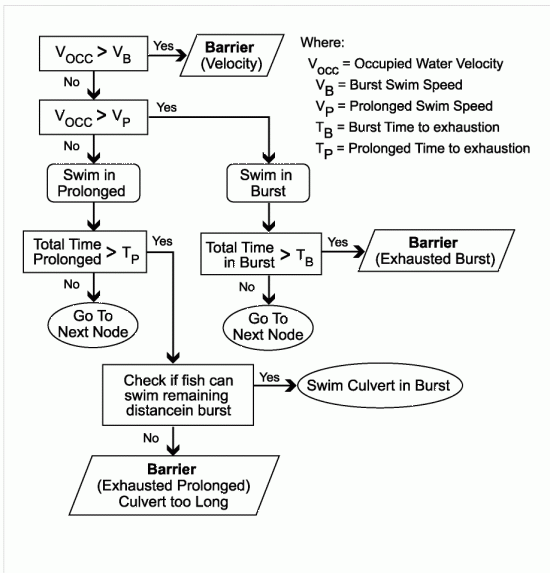Swimming Algorithm |
FishXing uses fish performance data to model a fish’s ability to swim through a culvert. The model uses a constant swim speed method, which calculates the fish’s speed relative to the ground by taking the difference between the fish’s swim speed and the speed of the water in which it is swimming against (Vocc). A fish may fail to pass through a culvert for one of two velocity-based reasons:
(1) Water velocity exceeds a fish’s maximum swim speed, or
(2) A fish becomes exhausted at either prolonged or burst speed before reaching the culvert inlet.
The culvert is divided into equally spaced segments with the segment endpoints defined by nodes. At each node swimming calculations are performed based on the following algorithm:

1) If occupied velocity is greater than or equal to fish’s burst speed then the culvert is a velocity barrier.
else
2) If occupied velocity is greater than or equal to fish’s prolonged speed then the fish swims in burst mode.
else
3) If the fish is making adequate progress in prolonged mode, it swims through the node at prolonged speed. If not, fish swims in burst mode.
See also: Species Swimming Capabilities, Swim Categories, Fish Swimming and Swim Speed Tests, Time to Exhaustion, Fish Length and Swim Speeds